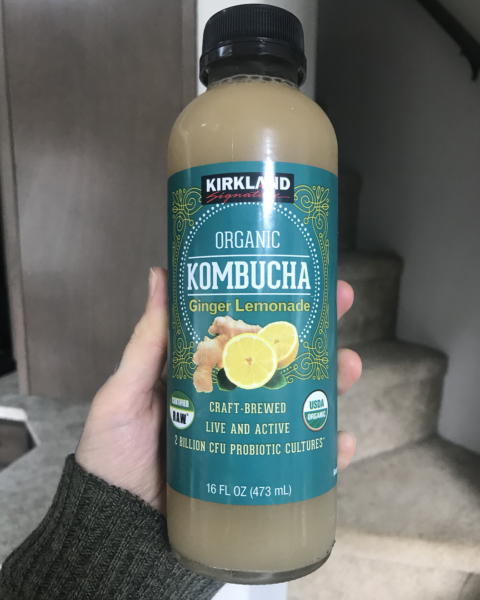
Costco is famous for its unbeatable deals, bulk-sized products, and an irresistible food court. However, there’s more going on beneath the surface than meets the eye.
Costco’s layout and shopping experience are carefully designed to encourage customers to spend more than they originally intended. From the entrance to the checkout, Costco uses subtle psychological tricks to nudge shoppers toward impulse purchases.
Let’s break down 13 of these sneaky strategies that make your wallet lighter while you walk out with more than you planned.
1. Strategic Food Court Placement
Costco places its famous food court near the store exit rather than the entrance. Why? To encourage you to shop on an empty stomach.
Studies have shown that shopping while hungry leads to more impulsive buying, and Costco wants you to wander the aisles with a growling stomach. After loading up your cart, the $1.50 hot dog combo is a perfect reward on your way out.
2. Sampling Strategy
Ever noticed that you leave Costco with items you didn’t intend to buy after trying a free sample? That’s no accident. Costco’s free sampling stations aren’t just about generosity—they’re psychological bait.
When you taste a product, you create a connection with it, increasing the likelihood of purchase. Sampling makes you feel more committed, and before you know it, that pack of frozen dumplings is in your cart.
3. No Clear Signage
One of Costco’s most effective tricks is the lack of signage and aisles that make it difficult to find specific products.
This forces you to wander through more sections than you planned, often leading to impulse buys of items you never knew you needed, like a new set of kitchen towels or a 24-pack of granola bars.
4. Treasure Hunt Mentality
Costco’s layout changes regularly, forcing even frequent shoppers to search for their favorite items. This strategy creates a “treasure hunt” mentality, where customers browse aisles they normally wouldn’t.
The excitement of stumbling upon a new product deal keeps you engaged and often leads to spending on unexpected items.
5. High-End Items at the Entrance
The first thing you see when you walk into Costco are high-end products, like large-screen TVs, jewelry, and designer handbags.
These big-ticket items are placed front and center to condition you into thinking you’re getting access to luxury at unbeatable prices. By starting with these items, you’re more likely to feel like everything else is a bargain by comparison.
6. Bulk Packaging Feels Like Savings
Costco’s core value proposition revolves around bulk packaging, giving you the sense that you’re saving money by buying in larger quantities.
While buying in bulk can be economical, it also leads to overconsumption and higher spending in the moment—because who can resist a 48-pack of granola bars for just a few extra dollars?
7. No Price Tags on Display Items
Costco is known for showcasing big items, like furniture, appliances, and outdoor gear, without obvious price tags. By the time you finally find out the cost, you’re already emotionally invested in the item.
At that point, spending hundreds on a new sectional sofa seems like a more reasonable choice.
8. “Price Codes” Signal Special Deals
Costco’s price tags aren’t just a way to tell you how much something costs—they also communicate hidden messages.
If you see a price ending in .97, it’s a clearance item, while an asterisk in the top corner signals that the product won’t be restocked. These cues create urgency, pushing you to buy now instead of waiting.
9. Limited-Time Offers
Seasonal and limited-time products are another psychological trick Costco employs.
Knowing that an item won’t be available for long triggers FOMO (fear of missing out) and increases the chance you’ll make a purchase on the spot. Items like holiday decor or limited-edition flavors make you feel like you have to buy now or regret it later.
10. Store Layout Forces Browsing
Unlike traditional grocery stores where essentials like bread and milk are located at the front, Costco places these items at the very back. This layout forces customers to pass through other sections—like electronics, clothing, and home goods—on their way to basic groceries.
Inevitably, you’ll pick up a few extra items on your journey to the back of the store.
11. Low Lighting Creates a Cozy Atmosphere
Costco’s warehouse-style lighting might seem purely functional, but it actually creates a more relaxed shopping experience. The dim lighting can make you feel comfortable and less hurried, encouraging you to take your time while browsing and potentially leading to more purchases.
12. Food Court Prices Create a Low-Cost Anchor
The famously low-priced Costco food court isn’t just a perk—it’s a psychological anchor. After spending hundreds on groceries or home goods, the thought of getting a full meal for under $2 makes the trip feel like a great value, even if you’ve just splurged on bulk items you didn’t need.
13. Free Samples Make You Feel Generous
After tasting a free sample, you feel compelled to return the favor by purchasing the product. Costco’s sampling strategy takes advantage of this reciprocity bias, where you feel the need to give back after receiving something for free.
This subtle sense of obligation leads to more spending than you may realize.
Conclusion
Costco’s layout and shopping experience are a masterclass in consumer psychology. By strategically arranging products, encouraging impulse buys through sampling, and leveraging bulk deals, Costco ensures that customers spend more than they intended. The next time you visit, you’ll be aware of these tricks—but good luck leaving with only what’s on your list!






